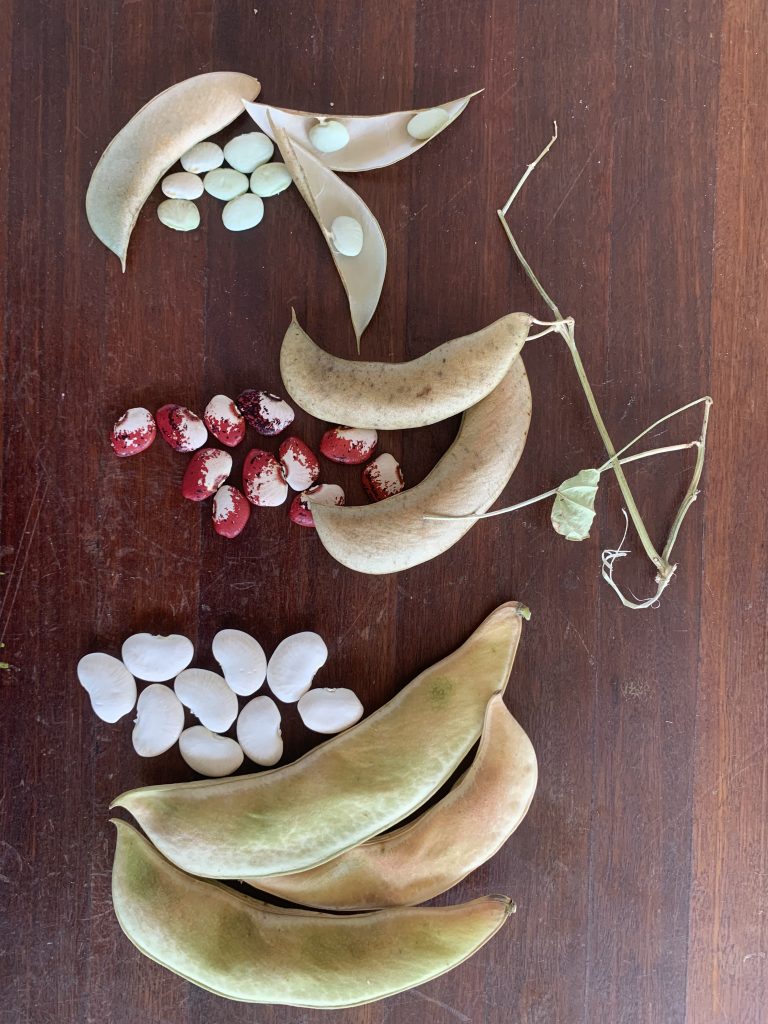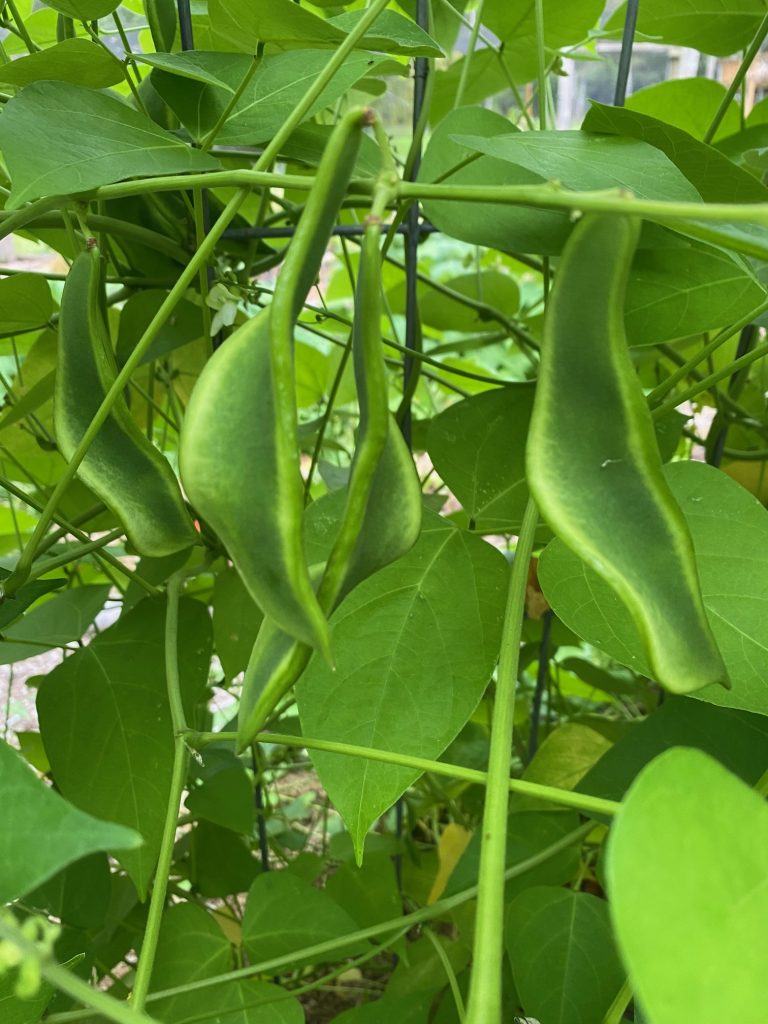Botanical name : Phaseolus lunatus
Common name : Lima Bean, Madagascar bean, Christmas bean, Butter bean
Intermediate difficulty for seed saving
Lifecycle: Perennial if climate allows
Pollination: Self and insect pollinated
Mating system: Perfect flowers
Suggested spacing: Same as for eating production
Seed specific requirements: None
Isolation distance: 30 to 150 metres
Population size: 10 or more plants. Viable seed can be produced from a single plant.
Seed maturity: Seed is mature when have changed colour to brown.
Processing method: Break seeds out of pods.
Expected seed viability: 3 years
Images


![Big Red Lima Bean. [photo: BVSS/LW]](https://www.seedsavers.org.au/wp-content/uploads/2025/07/IMG_0852-768x1024.jpg)
Cultivation
Lima beans are frost sensitive. They are perennials but are grown as annuals in colder areas. They prefer long warm growing seasons to set good crops. In cooler areas do not sow too early as they need quite warm soil to germinate.
Growing for seed
Ensure they are appropriately isolated from other varieties of Lima beans as unlike common beans they can be cross-pollinated by insects. Moderate distances such as 30 to 50 metres are enough to reduce the risk of cross pollination for most situations.
As Lima beans can successfully self-pollinate it is possible to grow multiple varieties by using netting or caging to exclude pollinating insects. Individual blossoms can also be bagged to ensure they come true-to-type.
Selection
Traits to look for when selecting plants for seed saving include: flower colour, plant habit, pod size and seed colour. Remove any plants that do not meet the criteria for that variety.
Harvest
Lima beans can be harvested for seed as soon as the pods begin to change colour to brown. Some varieties are prone to splitting while on the plant and should be collected progressively as they ripen before this occurs. Otherwise, if the weather is dry the pods can be left until they are all ready to harvest.
Avoid dry pods being soaked by rain or irrigation if possible, otherwise seeds may go mouldy in the pods.
Processing
Pods are easily processed for seed by breaking them open. Some varieties will self-shell during drying. The pods do have a sharp point so care should be taken during podding to avoid being stabbed.
Storage
After processing, it is a good idea to keep the seed either spread out or in a paper bag in a dry location to ensure that any moisture being held in the seed has a chance to dry off. Lima beans are large seeds and can take a surprisingly long time to dry out fully internally.
There is a fair likelihood that insect pests will have laid their eggs in or on the seed. To stop them in their tracks one of the easiest methods of control is to freeze the seed for a few days. To do this the seed must be absolutely dry first. Seed will also store for longer if it is fully dry. It then must be placed in an airtight container – like a glass jar – before going into the freezer for 48 to 72 hours to kill pests and their eggs.
Seed is best stored in an airtight container where it is dark, cool and dry.
Contributors
Liz Worth, Nellie Pryke
